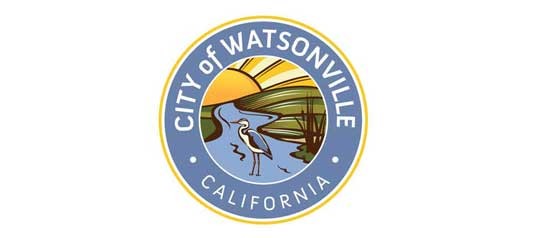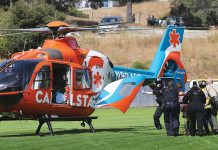WATSONVILLE — The Watsonville City Council unanimously supported one of five transportation scenarios outlined in a recently-released study Wednesday.
The Unified Corridor Investment Study draft Step 2 Scenario Analysis report was released in late September by the Regional Transportation Commission.
The study looks at different transportation investments that could be made on Highway 1, Soquel Avenue/Soquel Drive/Freedom Boulevard, and the Santa Cruz Branch Rail Line.
The study’s draft report, developed by Kimley-Horn and Associates, Inc. and Strategic Economics, Inc., is organized into two sections: The baseline information, which presents the existing conditions of the transportation system, and a scenario analysis, which presents projects estimated to be completed by 2035.
The five scenarios cover a variety of options, such as bus lanes on Highway 1, passenger rail service, carpool lanes and more. A “no build” scenario is also included.
Watsonville Public Works and Utilities Director Steve Palmisano said city staff recommended the council support Scenario B, which includes bus improvements and passenger rail service with a trail. But staff also suggested adding other projects from different scenarios, including freight rail service in Watsonville and auxiliary lanes on Highway 1.
The council voted to support Scenario B, but suggested that carpool lanes be added to scenario while eliminating improvements to the Mission Street intersection in Santa Cruz.
According to the draft study, all scenarios provide slight improvements to the average speed on northbound Highway 1 during peak morning commute hours. The “no build” scenario puts the average speed on Highway 1 between San Andreas Road and Santa Cruz at 12 mph, while the other scenarios range from 17 mph to 39 mph.
Overall speed across all corridors in the study remains about the same in all scenarios from now to 2035.
The cost of the scenarios range from $740 million to $1.3 billion, with only about half of the funding possibly available. Annual cost of maintenance is an additional $25-$47 million.
According to Senior Transportation Planner Grace Blakeslee, the RTC is scheduled to hear the recommended scenario during a public meeting in Watsonville on Nov. 15, and make a final decision on Dec. 6.
Getting Watsonville’s input on the study is crucial when the RTC deliberates a preferred scenario, Palmisano said.
“Watsonville has most at stake in this particular issue in that so many residents make the commute north on Highway 1 and sit in that traffic both ways, every day,” he said.
Councilman Aurelio Gonzalez agreed, saying North County residents don’t feel the brunt of the highway’s congestion on a daily basis.
“Now is an important time for the City of Watsonville to step up and say this is what we want, not wait for somebody to tell us this is what you need,” he said.
A small group of people from across the county stayed for the meeting as it ran into the early morning to give their input on the study.
Silvia Morales of Watsonville said she spends three hours daily commuting on Highway 1 while transporting her children to and from school. But she said she was most concerned about the council’s “lack of understanding” of the study.
“No one really understands how your lack of understanding impacts me in getting to the other side of the county,” she said.
Ashley Winn of La Selva Beach said the La Selva Beach Improvement Association “overwhelmingly” voted against the rail with trail proposal, citing costs and space constraints.
“If you go with Scenario B, that’s the end of widening the highway,” he said. “Scenario B gives the RTC an excuse not to widen Highway 1.”
Palmisano pointed out that once the RTC approves a scenario, it will still be many more years of studies, such as cost and environmental analyses.
“Right now everything is very conceptual,” he said.
•••
For information on the Unified Corridor Investment Study, visit sccrtc.org. Comments on the study can be sent to uc*@****tc.org or mailed to the RTC at 1523 Pacific Ave., Santa Cruz, CA 95060.












